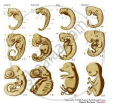Advertisements
Advertisements
प्रश्न
Mammals : _________ : : Amphibia : Fishes
उत्तर
Mammals : Reptiles : : Amphibia : Fishes
APPEARS IN
संबंधित प्रश्न
What are vestigial organs?
Differentiate between homology and analogy. Give one example of each.
(a) Select the homologous structures from the combinations given below:
(i) Forelimbs of whales and bats
(ii) Tuber of potato and sweet potato
(iii) Eyes of octopus and mammals
(iv) Thorns of Bougainvillea and tendrils of Cucurbita
(b) State the kind of evolution they represent.
Explain with an example for the given, how the following provides evidence in favor of evolution in organisms :
Homologous organs
Study the following statements:-
I. Wings of birds and wings of bats are homologous organs.
II. Wings of birds and wings of insects are modified forelimbs.
III. Wings of birds and wings of insects are analogous organs.
IV. Wings of birds and forelimbs of horse are homologous organs.
The correct statements are
(A) I and II
(B) II and III
(C) III and IV
(D) I and IV
“Two areas of study namely 'evolution' and 'classification' are interlinked'. Justify this statement.
How analogy and homology considered as an evidence in support of evolution ?
Name the scientists who Discovered the fossil of Australopithecus
What are homologous organs?
One pair of organs in the following animals are not homologous. This is :
(a) forelimbs in humans and lizard
(b) forelimbs in lizard and frog
(c) wings in butterfly and bat
(d) wings in bat and bird
X, Y, and Z are three animals. The animal X can fly but animal Y can only run on ground or walls. The forelimbs of animals X and Y have the same basic design but they are used for different purposes such as flying and running respectively. The animal Z became extinct an long time ago. The study of fossils of Z tells us that it had some features like those of X and some like those of Y. In fact, Z is said to form a connecting link in the evolutionary chain of X and Y.
(a) What could the animals X, Y and Z be?
(b) What name is given to the forelimbs like those of X and Y which have the same basic design but different functions?
(c) Name one feature in which Z resembled X.
(d) Name one feature in which Z resembled Y.
(e) Which is the correct evolutionary chain involving X, Y and Z : X → Z → Y or Y → Z → X?
The organs P and Q of two animals have different structures but similar functions. On the other hand, the two organs R and S of two other animals have the same basic structure but different functions.
(a) What are the organs like P and Q known as?
(b) Name the organs like P and Q. Also name the animals which have such organs.
(c) What are the organs like R and S called?
(d) Name the organs like R and S. Also name the animals which have such organs.
Select a set of homologous organs from the following:
(A) Wings of a bat and wings of a butterfly
(B) Wings of a pigeon and wings of a bat
(C) Wings of a butterfly and wings of a pigeon
(D) Forelimbs of a duck, forelimbs of a cow and forelimbs of a lizard
In a class, students were asked to observe the models/slides/pictures of the skeletons of forelimbs and wings of different organisms. After the observations the students made the following groups of homologous structures. Select the correct group :
(A) Wings of a bird and a butterfly
(B) Wings of a pigeon and a bat
(C) Wings of a butterfly and a bat
(D) Forelimbs of a cow, a duck and a lizard
You have potato, carrot, radish, sweet potato, tomato and ginger bought from the market in your jute bag. Identify two vegetables to represent the correct homologous structures.
(A) Potato and tomato
(B) Carrot and tomato
(C) Potato and sweet potato
(D) Carrot and radish
Write short notes based upon the information known to you.
Embryology
Observe the picture and answer the following questions.
A) Which evidence of evolution is shown in the picture?
B) What can be proven with this proof?
C) Give one more example of evidence of evolution
_______ is a connecting link between Annelida and Arthropoda.
Explain any three molecular (genetic) evidences in favour of organic evolution.
Define fossil.
Answer the following question:
What are homologous structures? Give an example. Is it necessary that homologous structures always have a common ancestor? Justify your answer.
Very short answer question:
What is vestigeal organ?
Find an odd one out.
Appendix : vestigial organ : : Peripatus : ____________
Give scientific reason.
Peripatus is said to be the connecting link between Annelida and Arthropoda.
Write a short note:
Embryological evidences
Enlist the evidences of evolution.
Which evidence of evolution is shown in the given picture? Explain the importance of this evidence.

The fossil remains of Archaeopteryx is a connecting link between ______
Evolutionary convergence is the development of:
The bones of forelimbs of whale, bat, cheetah and man are similar in structure, because ______.
What are we referring to? When we say 'simple organisms' or 'complex organisms'.
Complete the following chart:

Write down the difference between homologous and analogous organs.
Give examples of homologous organs and analogous organs in plants.
Give a definition of Palaeontology.
Pick the odd man out:
